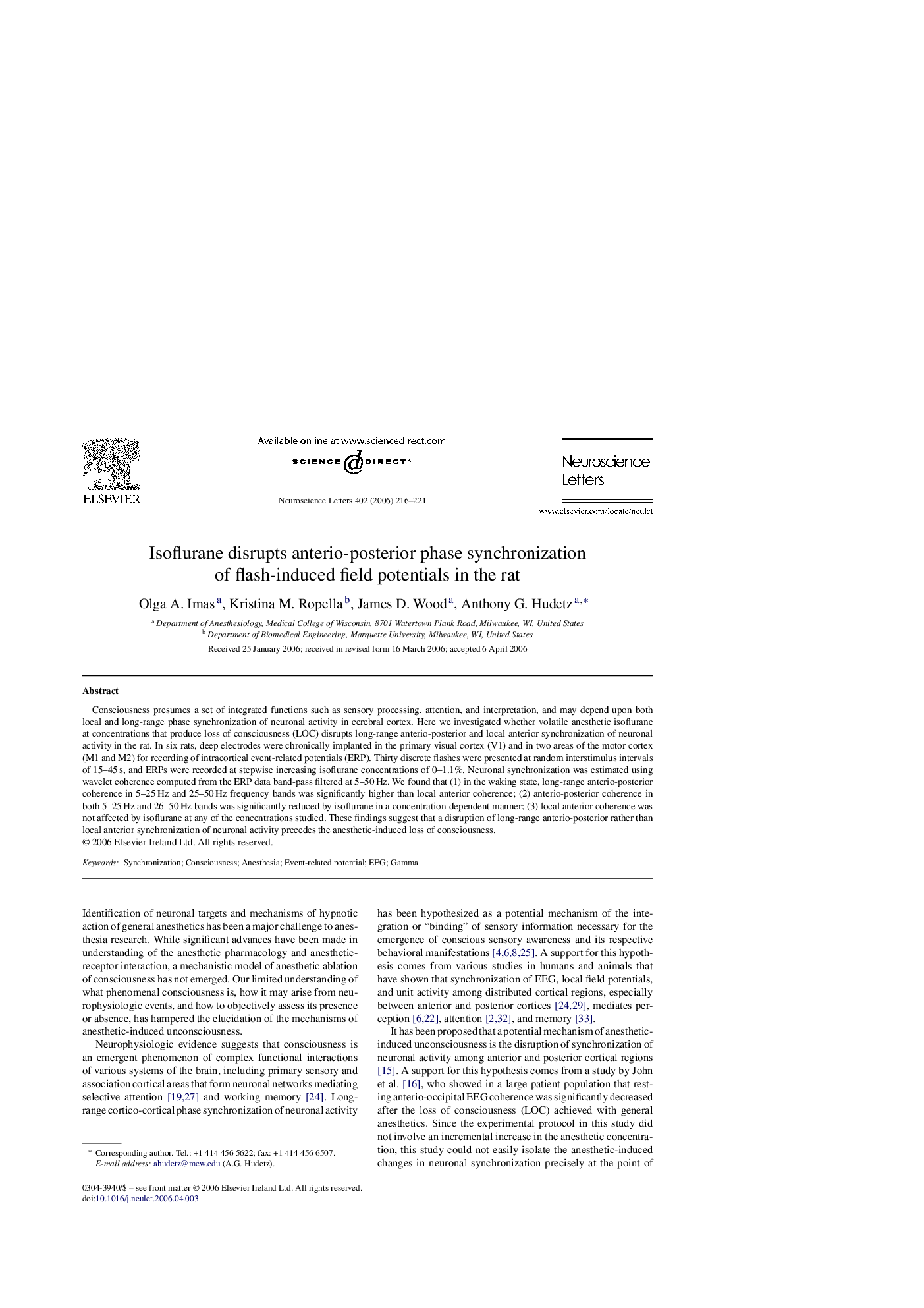| Article ID | Journal | Published Year | Pages | File Type |
|---|---|---|---|---|
| 4350521 | Neuroscience Letters | 2006 | 6 Pages |
Abstract
Consciousness presumes a set of integrated functions such as sensory processing, attention, and interpretation, and may depend upon both local and long-range phase synchronization of neuronal activity in cerebral cortex. Here we investigated whether volatile anesthetic isoflurane at concentrations that produce loss of consciousness (LOC) disrupts long-range anterio-posterior and local anterior synchronization of neuronal activity in the rat. In six rats, deep electrodes were chronically implanted in the primary visual cortex (V1) and in two areas of the motor cortex (M1 and M2) for recording of intracortical event-related potentials (ERP). Thirty discrete flashes were presented at random interstimulus intervals of 15-45Â s, and ERPs were recorded at stepwise increasing isoflurane concentrations of 0-1.1%. Neuronal synchronization was estimated using wavelet coherence computed from the ERP data band-pass filtered at 5-50Â Hz. We found that (1) in the waking state, long-range anterio-posterior coherence in 5-25Â Hz and 25-50Â Hz frequency bands was significantly higher than local anterior coherence; (2) anterio-posterior coherence in both 5-25Â Hz and 26-50Â Hz bands was significantly reduced by isoflurane in a concentration-dependent manner; (3) local anterior coherence was not affected by isoflurane at any of the concentrations studied. These findings suggest that a disruption of long-range anterio-posterior rather than local anterior synchronization of neuronal activity precedes the anesthetic-induced loss of consciousness.
Related Topics
Life Sciences
Neuroscience
Neuroscience (General)
Authors
Olga A. Imas, Kristina M. Ropella, James D. Wood, Anthony G. Hudetz,
